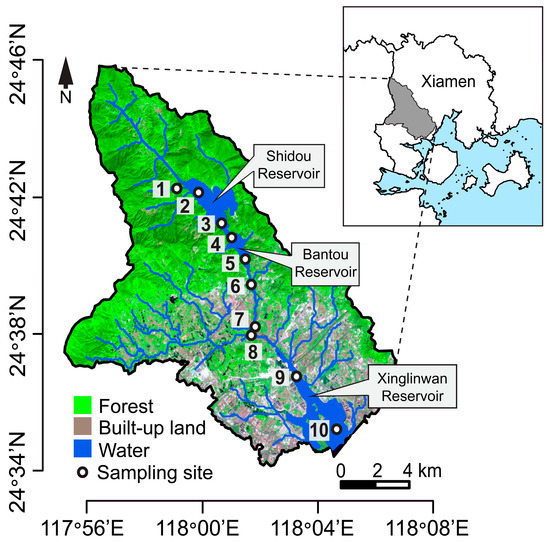| Location: Home > Papers |
| First Author: | Isabwe Alain |
| Abstract: |
Whether bacterioplankton are assembled in the same way as microeukaryotes is a key question that has been answered only partially in microbial ecology. In particular, relating distribution patterns to the underlying ecological processes for plankton communities in highly dynamic ecosystems, such as river–reservoirs subjected to anthropogenic impacts, remains largely unstudied. Here, we analyzed taxonomic distribution patterns, and unraveled community assembly processes underlying the core and random bacterioplankton and microeukaryotes from a subtropical river–reservoir system. These plankton domains were modelled using the spatial abundance distributions (SpADs) of the operational taxonomic units (OTUs) as a proxy for abundant and rare taxa delineation. Both bacterioplankton and microeukaryote plankton communities exhibited significant distance–decay relationships, and samples were grouped depending on reservoir or river habitats. The neutral community model showed that 35–45% of the plankton community variation could be explained by neutral processes. The phylogenetic null model revealed that dispersal limitation accounted for the largest percentage of pairwise comparisons (42–68%), followed by environmental selection (18–25%). We concluded that similar prevalence of ecological processes acting on particular subsets of the bacterioplankton and microeukaryotes might have resulted from similar responses to environmental change, potentially induced by human activities in the watershed.
This is an open access article distributed under the Creative Commons Attribution License which permits unrestricted use, distribution, and reproduction in any medium, provided the original work is properly cited (CC BY 4.0). |
| Contact the author: | YANG Jun |
| Page Number: | 2073-4441 |
| Issue: | 6 |
| Subject: | |
| Impact Factor: | |
| Authors units: | |
| PubYear: | JUN 2019 |
| Volume: | 11 |
| Publication Name: | WATER |
| The full text link: | https://doi.org/10.3390/w11061127 |
| ISSN: | |
| Appendix: |
